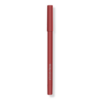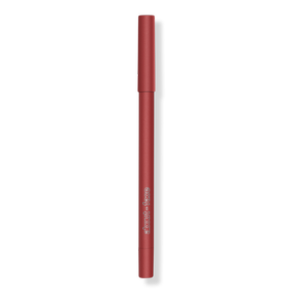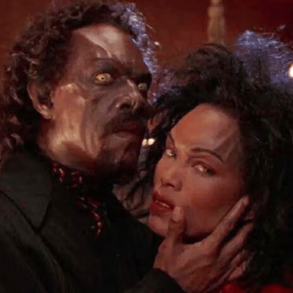PARIS — The designer beauty wars are heating up.
The newest entrant: Prada, whose vision of beauty will infuse two new product categories — makeup and skin care — starting on Aug. 1.
“What does beauty mean today? This question was at the core of our work with L’Oréal,” Miuccia Prada and Raf Simons, co-creative directors of Prada, jointly said, referring to the brand’s beauty licensee. “Abandoning all the clichés of the past, we believe that beauty today is the representation of one’s personality, freedom and self-confidence.
“The idea of ‘care’ was also crucial, as a gesture and as a need, for one’s well-being,” they continued. “The important results that research has achieved in this field has allowed us to work on real and effective products.”
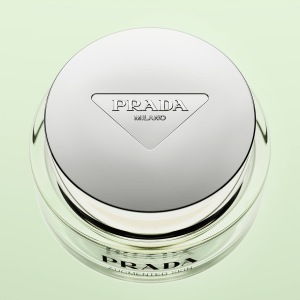
Prada skin care
Cyril Chapuy, president of L’Oréal Luxe, Prada Beauty’s licensee, deems the further beauty incursion to be an important step for the Milan-based brand.
“After the spectacular launch of Prada Paradoxe in 2022 that reinstated the brand’s leadership in feminine fragrances, the Skin and Color launch opens a new chapter that will propel the brand to new heights,” he said, describing the collection as representing “contemporary luxury beauty at its best: superior quality, ground-breaking tech innovation and no compromise on sustainability.”
After L’Oréal acquired the Prada Beauty license on Jan. 1, 2021, it swiftly rebooted the existing fragrance portfolio and launched scents such as Luna Rossa Ocean and Prada Paradoxe, which became the top women’s perfume launch last year in the U.S.
“That’s why now we feel it’s the perfect time for the brand to widen our global point of view and vision on beauty,” said Yann Andrea, international general manager of Prada Beauty.
The launch of makeup and skin care will take place first on prada-beauty.com and prada.com, on Aug. 1. Then the tight rollout will include Harrods and Selfridges in London on Aug. 18. Douglas in Munich, Frankfurt and Dusseldorf, Germany, and Rinascente in Rome will start carrying the products in October. Prices will range from 45 euros for a lipstick to 80 euros for an eye shadow and 360 euros for a cream.
The U.S. brick-and-mortar launch is planned for January.
Prada Beauty products will be carried in very selective brick-and-mortar distribution — mainly high-end department stores, shopping malls, speciality stores and perfumeries, as well as travel-retail locations.
L’Oréal executives would not discuss sales projections, but industry sources estimate that in three years, Prada skin care and makeup might generate 25 to 30 percent of the brand’s total beauty business. That could mean about 250 million euros in annual retail sales.
“Prada Beauty is an iconic signature,” Chapuy said. “The brand fits with L’Oréal Luxe’s very diverse and complimentary portfolio of 23 luxury beauty brands.”
L’Oréal Luxe keeps bolstering its designer makeup offer, with Prada color cosmetics coming two years after the launch Valentino makeup. Some other fashion beauty brands in the Luxe portfolio, such as Giorgio Armani and Yves Saint Laurent, are already three-axis.
Skin care — including sun care — and makeup were the largest product categories at L’Oréal, generating 40.1 percent and 20.2 percent, respectively, of overall group sales of 38.26 billion euros in 2022.
Also last year, the Luxe division was the group’s largest sales-maker, ringing up 38.3 percent of the total.
“As one of the most captivating couture brands in the world, Prada Beauty has a unique ability to resonate with the younger generation,” Chapuy continued, explaining it “has an exceptional growth potential to excel in all luxury beauty categories and soon join the very selective club of L’Oréal Luxe billionaire brands.”
For Prada, the overarching objective was to rethink beauty. “This was our approach, vision and ambition,” Andrea said.
It all began at the brand’s roots, with the Prada Beauty team working closely with the Prada designers and their creative team. “We had the privilege to get the access to 27,000 prints and fabrics just to create the perfect synergy between fashion and beauty,” Andrea said. “Our beauty philosophy was to first get the most sophisticated skin. Then, you can add a touch of color eccentricity.
“We wanted to rethink the way of developing product and of collaborating with makeup artists,” he said.
So Prada Beauty opted to tap two artists: Lynsey Alexander for real-life makeup and Inès Marzat — aka Inès Alpha — for makeup in the virtual world. They work closely together, as well as with Prada and Simons.
“Prada loves to create dialogues,” Andrea said of the brand. “This really allowed us to open new perspectives on colors, textures and finishes.”
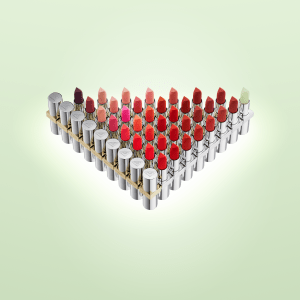
Prada lipsticks
“Three years ago, the L’Oréal team came to me with pretty much a blank canvas of an idea for a brand,” said Alexander, Prada Beauty’s global creative makeup artist. “Obviously, we have the heritage and all the incredible archive to look at from Mrs. Prada, but from a beauty perspective, the slate was clean.”
This was new for Alexander. She’d been asked to rebrand, reformulate and inject youthfulness into color cosmetics brands before — but never to start anything entirely from scratch. “It was quite a daunting task, really,” she said. “It began with me by going deep into Prada land.”
Starting three years ago during pandemic-related lockdowns, Alexander dove deep into those archives. “Everything was sent to me in terms of Saffiano leather textures, nylon swatches of fabric, archive prints,” she said. “I basically turned my house into a sort of Prada catalogue.”
Swatches and samples were everywhere. Alexander took in runway imagery, too. She reminded herself: “I’m creating a makeup line here for a really cool, amazing brand with such heritage and history, but I have to make something that is desirable. I want to make something that is beautiful.”
Alexander had a constant dialogue with herself, asking questions like: “Do I desire it? Do I want to wear it? Would I put it on the runway? Would Mrs. Prada wear it?
“Because you can go so off-piste with makeup when you have no real framework,” she continued. “There’s no limits to where you can take it.”
No compromises were made on the sustainable, cruelty-free formulas as the backs-and-forths were ongoing with Alpha, the designers and the L’Oréal labs, which would swiftly road-test products. Inclusivity was top of mind.
“Every single palette, every single lipstick color I feel super proud of because it’s been vetted through the toughest of audiences,” Alexander said.
She believes less is more makeup-wise, so eschewed eye shadow compacts with five or six colors. “It’s too many. We don’t wear makeup like that anymore,” Alexander said. “This is not the ’80s.”
Instead, six four-color palettes were created.
“We’ve gone for hyper extremes,” said Alexander, referring to the strongest hyper matte color to the most metallic foil. “We’ve used the most incredible hybrid formula, and it basically feels like a wet cream, but it has the performance and the payoff of a powder. There’s absolutely no fall-out. Mrs. Prada hates glitter, which is music to my ears. So everything metallic and shiny has a grown-up, luxe quality.
“The concept was three neutral harmonies with one striking unexpected twist — sort of disruption of color,” Alexander added. “That’s what gives it the Prada edge.”
The makeup colors were inspired by Prada prints, including remarkable pairings of colors, such as aubergine and orange, to an elegant effect. “I wanted to take that philosophy and fit it into the makeup,” Alexander said. “It had to be really considered and thought out.”
She has also been appointed the official makeup artist for Prada fashion and will create the look for its womenswear show in Milan, for the first time on Sept. 21.
The makeup was created to be performant for real women. The first lipsticks developed were red, pink and beige, then secondary colors and off-key hues were added. “We were all in agreement that we should just be doing matte lipsticks,” said Alexander, referring to the texture favored by the house since its first show in 1988. “Basically, we did the same as we did with the eye shadows — soft matte lipsticks and hyper-matte lipsticks.”
There are 13 of each. The hyper matte’s outer packaging has a gold-colored band around the middle, while the soft matte’s is silver-hued. “For the packaging, our idea was to reconcile high sophistication and essentiality,” Andrea said.
The lipsticks use three pure pigments, rather than the up to 12 traditionally, for a strong, long-lasting payoff in one stroke. The weightless products are also infused with caring ingredients.
A transparent matte lip balm comes in the Prada signature green and can be used as a primer.
“Prada is obsessed with tech and beauty — this idea of tech being a big involvement in where we’re going, what we’re looking toward,” Alexander said. “Part of my journey was working with a digital makeup artist.”
That was Alpha, the global creative e-makeup artist, with whom Alexander collaborated. They would start with the same brief, decipher it then chat over Zoom to compare what they’d created.
“It was really inspiring,” Alexander said.
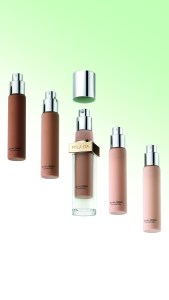
Prada foundations
An orange that Alpha made digitally might spring to life in the real world or vice versa, whereby a physical prototype could be translated digitally into the 3D virtual world.
“It was a real dialogue of everyone being the master of their field, but then pushing it into unknown territory and basically ending up with something completely unique that we definitely didn’t plan on starting at that point,” Alexander said. “Inès works with pixels, and I work with pigments.”
For the e-makeup artist, focusing on physical color cosmetics was a newfangled manner of creation, too. Alpha called the position at Prada Beauty her “dream job,” bridging two worlds. She views the virtual color cosmetics as continuing and augmenting the physical makeup.
“It was also a dream to work with Prada, which is a brand that I’ve been fascinated with since I was a child,” she said. “When we started collaborating, they asked me: ‘How can you work on the pixels so our labs can get inspiration from what you do to create textures or colors?’
So Alpha, who also mined the brand’s archives, proposed they work with various digital avatars on which she’d recreate physical makeup looks. “That’s super complicated,” she said, adding: “I had never worked that intricately on colors before.”
Alpha explained it’s impossible to recreate with the same intensity with pigments the colors appearing on a screen. “The goal for my work was to go beyond those constraints,” she said. “The AR looks that I created as face filters — everyone will be able to try them on,” continued Alpha, explaining those are like AR try-ons supplemented with a third layer of 3D makeup.
The conversations between Alpha and Alexander spilled over to foundation, which has soft-filter technology and comes in 33 colors developed with the help of artificial intelligence. “It was a human-and-tech approach when it comes to the shade creation,” said Andrea, calling the range inclusive.
“The product itself is very flexible. One shade can stretch over to a couple of skin tones,” Alexander said.
Foundation formulas include IRL(In-Real-Life)-micro-filter technology to optimize light diffusion.
“It basically creates this IRL filter on the face,” she said.
Rather than be about hiding or concealing imperfections, it’s meant to reveal skin perfection. “The name is Prada Reveal — it’s not about masking. Over time, it improves your skin’s quality. Everything’s about care and comfort,” Alexander said.
“We wanted to create a very strong connection between skin care and foundation,” Andrea added.
Prada had launched skin care once before, in September 2000. Under another licensee, the brand dove into beauty with unidose products. Tinted lip balms came next, but the range was discontinued.
The new skin care line, which includes Prada Augmented Skin The Cream, The Serum and The Cleanser & Makeup Remove, is not about correcting faults, as traditional treatments are, but takes a more positive approach.
“It’s about adaptation, which is the new performance,” Andrea said.
Prada skin care uses Adapto.gn Smart Technology, comprised of rare breeds of 15 plants dating back more than 400 million years.
“They have the power to increase or body’s resistance to any form of aggressions,” said Andrea, adding the tech helps skin adapt to its environment in real time.
In the L’Oréal Retail Lab, located in the Paris suburb of Clichy, Andrea walked through an in-store Prada Beauty prototype.

A rendering of the new Prada Beauty retail concept.
It came in the brand’s legendary green and displayed fragrance, skin care and foundation, and lip and eye makeup. The Prada triangle hung from the ceiling and padded walls connoted its Re-Nylon textures.
“It was our ambition to develop a global beauty brand and this house of Prada Beauty,” Andrea said.
That dream is swiftly becoming reality.
This post was originally published on this site be sure to check out more of their content.

